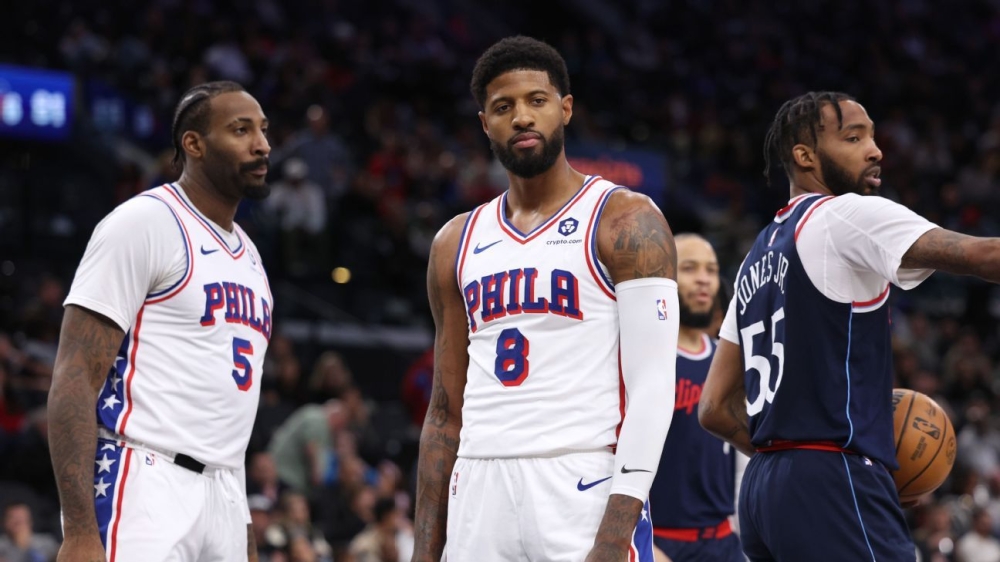NBA trade deadline 2025 – Player eligibility as of Dec. 15

The NBA calendar hitting Dec. 15 marks yet another significant date, as 85 free agents signed in the offseason will be eligible to be traded.
To get a better sense of the 2024-25 trade market, we have organized the entire player pool into different roster types (franchise centerpiece, All-Star, starter, reserve, etc.), salary and years remaining on their contracts. You can use these tables when attempting to determine what trades are possible across the league — especially since only the Indiana Pacers and Orlando Magic currently have cap space.
The 2023 Collective Bargaining Agreement introduced new trade rules that are explained below.
Teams like the Atlanta Hawks ($25.3 million), Brooklyn Nets ($23.3 million), Chicago Bulls ($17.5 million), Memphis Grizzlies ($12.6 million), New Orleans Pelicans ($9.9 million), Portland Trail Blazers ($6.9 million) and Washington Wizards ($12.4 million) have large trade exceptions and can acquire a player without sending back salary because of a previously created trade exception. The Dallas Mavericks have a $16.2 million trade exception but are not allowed to use it because they would exceed the second apron.
A new rule allows a team that did not use a signing exception this summer to acquire a player using the non-tax, biannual, tax and room exception to sign a free agent are allowed to acquire a player.
Trade rules
The NBA and players association adjusted the trade rules, allowing teams below the luxury tax more flexibility and spending power to acquire players in a trade.
The Sacramento Kings acquired DeMar DeRozan this offseason with the $7.7 million Expanded Traded Player Exception, a $2.7 million increase from the previous CBA.
The high-spending teams over the first and second apron saw the Traded Player Exception decrease from 110% last season to 100%.
Here is a breakdown showing what salaries a team can acquire in a trade.
Dec. 15 signing restriction
These 85 players who signed new contracts in the offseason will become eligible to be traded Sunday — though some of them can veto trades because of the one-year Bird restriction (see full explanation below).
Additional trade restrictions
Not every trade-restricted player will become eligible to be traded on Dec. 15. Here are the players who still will have some kind of restriction preventing them from being traded (or in some cases, being traded to specific teams) even beyond this week.
Explaining the trade restrictions
 play1:15What is a realistic trade the Lakers can make?
play1:15What is a realistic trade the Lakers can make?
Bobby Marks breaks down a possible trade he can see the Lakers and Wizards making.
Signing (SR): The majority of players that signed a contract in the offseason have a Dec. 15 trade restriction. The Jan. 15th restriction is for free agents that signed with their own team (with either bird or early bird rights) and a contract that is 120% greater than the previous season. For free agents like the Grizzlies Scotty Pippen Jr. that signed after Sept. 15, the restriction is three months after they signed their contract.
There is a group of 15 players, including the 76ers’ Joel Embiid, that either signed an extension or had their contract renegotiated and have a six-month trade restriction from the date the contract was executed. The restriction is because the extension and remaining years left on the original contract exceeds three seasons and the percentage increase is more than 5%.
The Boston Celtics’ Jayson Tatum signed a Designated Veteran Player Extension (better known as the super max) and cannot be traded until July.
One-year Bird rights (1YB): This restriction applies if a free agent signs a one-year contract and will have Bird rights with his current team when he becomes a free agent. A player can still be traded but must consent to the deal. If he does, the Bird rights do not transfer to his new team. The 2023 CBA introduced a new clause that players are now allowed to waive the one-year bird restriction in their contract. Thomas Bryant and Mo Wagner are two players who agreed to waive it this summer.
Aggregate restriction (AR): A player that was acquired in a trade (other than a team using cap space) cannot be aggregated with another contract for a period of two months. There are no players that have an aggregate restriction.
Poison pill provision (PPP): For players still on their rookie deals before an extension kicks in, the NBA counts their fourth-year salary as outgoing money and the average of the extension amount and last year of their rookie contract as incoming money. One example: Moses Moody would count as $5.8 million in outgoing salary for the Warriors but $10.2 million for an acquiring team.
NTC (No trade clause): The Phoenix Suns’ Bradley Beal and Los Angeles Lakers’ LeBron James are the only NBA players that have a “true” no trade clause. Both players were eligible to negotiate the clause in their contract because they played eight years in the NBA and four with the team they signed with. (The no trade clause for Beal carried into his trade to Phoenix.)
Declined rookie scale option (DRSO): A player drafted in the first round and had their third year or fourth year team option declined is still eligible to be traded. However, if the Lakers’ Jalen Hood-Schifino is traded, the maximum his new team can sign him to a starting salary in July is $4 million.
Trade eligible players
Source: espn.com
